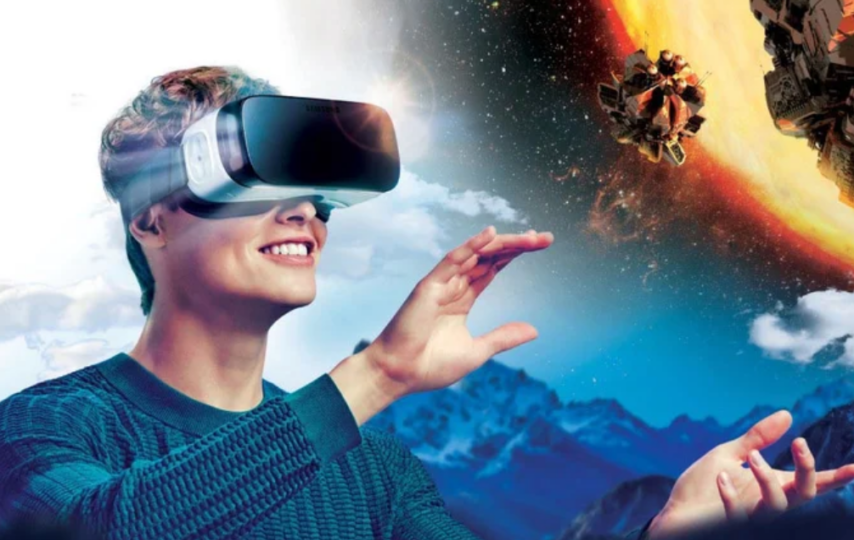As things stand, the application of immersive VR technology goes beyond realistic virtue roulette tables and similar video games. Other industries have been using this technology to break geographical barriers across the globe, allowing people to interact seamlessly with each other.
While more industries have adopted VR technology in the past few years, statistics show that its full potential is still untapped. Digital marketing is among the industries that could leverage the power of this technology to realize more business growth in India.
According to Statista, the AR and VR market in India is expected to experience a 13.39% annual growth rate between 2023 and 2028, resulting in a market volume of ₹US$1,170.0m. Statista also says that the VR market is growing at a high rate, and as a result, its growth rate could increase from less than $12 in 2022 to over $22 billion by 2025.
Below, we explore the reasons marketers in India should navigate immersive VR technology more fervently and how it can open new avenues for growth and consumer connection.
Why Digital Marketers in India Need to Navigate Immersive VR Technology More
The fast-paced digital world exerts pressure on businesses to keep up with emerging trends. That means businesses must focus less on traditional marketing methods and embrace technology-advanced marketing approaches like immersive VR technology.
Besides, with experiential marketing gaining traction in the past few years, there’s a need for marketing brands in India to leverage immersive VR to forge meaningful connections between businesses and consumers.
How Start-ups and Small Businesses Can Leverage VR Technology in Their Marketing
Some Indian brands are already using immersive VR in different segments of their business models. For instance, Flipkart is among India’s top e-commerce brands using the technology to reach consumers on their mobile devices.
Flipkart partnered with Google to create a TrueView in-stream ad that saw the e-commerce company generate almost 10 million views and realize a 65% audience retention.
Besides, global companies like BMW and Audi use VR to create virtual test drives so customers can experience the vehicle before buying. Another one is Bank of America, which uses Virtual Reality to teach employees how to open accounts and respond to virtual calls.
Here is how start-ups, small businesses, and marketing brands can go beyond advertising with Virtual Reality.
- Captivating Consumer Experiences
As human beings, we tend to understand situations better when we see them. Immersive VR technology can transport users to entirely new realms without needing to leave their current location.
Digital marketers can leverage this capability to create immersive experiences where customers can “test” products, explore different features, and envision how the products can enhance their lives.
It increases the chances of customers buying because they are already “familiar” with the product, minimizing returns or post-purchase regrets.
- Overcoming Physical Boundaries
Geographically, India is a vast country. This poses a challenge for brands, especially start-ups, to reach every corner of the country physically.
However, marketers can use immersive VR to break down these geographical barriers to connect with consumers in remote areas to give them a virtual experience that mirrors an in-person interaction. This can expand a brand’s reach and foster a sense of inclusivity among diverse audiences.
- Enhanced Product Demonstrations and Training
VR has changed the way people learn. Brands can now hire workers worldwide and utilize VR technology to train and orient them. For instance, circling back to the example of Bank of America above, immersive VR provides a platform for realistic product demonstrations and training modules for industries like automotive, real estate, and education.
Potential customers can virtually explore a property or participate in educational simulations. This enhances the consumer’s understanding of the product or service and accelerates the decision-making process.
Final Thought
Brands must constantly innovate to stay relevant. They must harness upcoming technologies to build and implement their brand strategy to achieve sustainable growth and gain a competitive edge. And one way to achieve this is by harnessing the potential set forth by immersive VR.
Immersive Virtual Reality is increasingly becoming one of the powerful marketing tools for creating immersive and engaging experiences. The notion of it being dominated by the gaming industry is slowly fading away, creating room for other industries to harness its capabilities.
So, whether a start-up or a big brand in India, you can adopt VR technology in your marketing strategies to grow your business.








